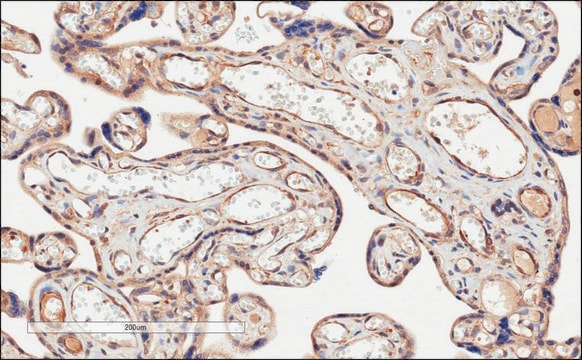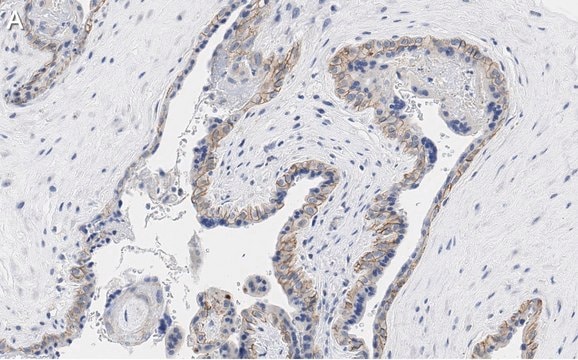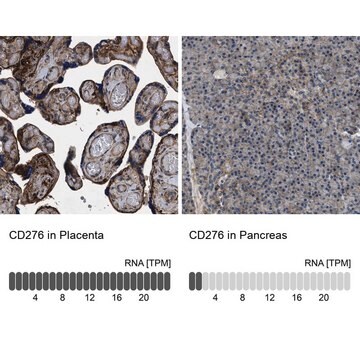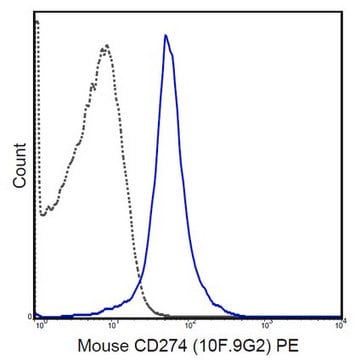MABC991
Anti-PD-L1 Antibody, clone 10F.9G2
clone 10F.9G2, from rat
Sinónimos:
PD-L1, PDCD1 ligand 1, Programmed death ligand 1, B7 homolog 1, B7-H1, CD274
About This Item
Productos recomendados
origen biológico
rat
Nivel de calidad
forma del anticuerpo
purified antibody
tipo de anticuerpo
primary antibodies
clon
10F.9G2, monoclonal
reactividad de especies
mouse
técnicas
flow cytometry: suitable
immunohistochemistry: suitable
inhibition assay: suitable
isotipo
IgG2bκ
Nº de acceso NCBI
Nº de acceso UniProt
Condiciones de envío
ambient
modificación del objetivo postraduccional
unmodified
Descripción general
Especificidad
Inmunógeno
Aplicación
Induces Function Analysis: Blockade with a representative lot of anti-PD-L1 combined with IL-2 enhanced antiviral CD8 T cell responses during chronic LCMV infection (West, E.E., et. al. (2013). J Clin Invest. 123(6):2604-15).
Inhibition Analysis: A representative lot blocked the action of PD-L1 (Grabie, N., et. al. (2007). Circulation. 116(18):2062-71;West, E.E., et. al. (2013). J Clin Invest. 123(6):2604-15;El Annan, J., et. al. (2010). Invest Ophthalmol Vis Sci. 51(7):3418-23).
Calidad
Flow Cytometry Analysis: 1 µg/mL of this antibody detected PD-L1 in one million EL4 cells.
Descripción de destino
Ligadura / enlace
Forma física
Otras notas
¿No encuentra el producto adecuado?
Pruebe nuestro Herramienta de selección de productos.
Código de clase de almacenamiento
12 - Non Combustible Liquids
Clase de riesgo para el agua (WGK)
WGK 2
Punto de inflamabilidad (°F)
Not applicable
Punto de inflamabilidad (°C)
Not applicable
Certificados de análisis (COA)
Busque Certificados de análisis (COA) introduciendo el número de lote del producto. Los números de lote se encuentran en la etiqueta del producto después de las palabras «Lot» o «Batch»
¿Ya tiene este producto?
Encuentre la documentación para los productos que ha comprado recientemente en la Biblioteca de documentos.
Los clientes también vieron
Nuestro equipo de científicos tiene experiencia en todas las áreas de investigación: Ciencias de la vida, Ciencia de los materiales, Síntesis química, Cromatografía, Analítica y muchas otras.
Póngase en contacto con el Servicio técnico













